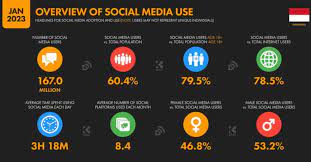The business world is a complex, dynamic environment that indonesia media online influences every aspect of our daily lives. From multinational corporations to small local enterprises, businesses drive economic growth, innovation, and societal development. This article delves into the core elements of modern business, examining its types, functions, challenges, and future trends.
Types of Businesses
Businesses can be categorized based on their size, ownership structure, and sector of operation. The primary types include:
- Sole Proprietorship: Owned and operated by a single individual, this type of business is easy to establish but carries the risk of personal liability.
- Partnership: Involves two or more individuals sharing ownership and responsibilities. Partnerships can be general or limited, offering various levels of liability protection.
- Corporation: A separate legal entity owned by shareholders. Corporations offer limited liability but are subject to more regulations and taxes.
- Limited Liability Company (LLC): Combines the benefits of a corporation and a partnership, offering liability protection while allowing profit sharing.
- Nonprofit Organization: Operates to serve the public good rather than for profit. Nonprofits enjoy tax exemptions and reinvest profits into their mission.
Core Functions of a Business
Businesses, regardless of their type, perform several core functions to achieve their goals:
- Operations: Involves the day-to-day activities that produce goods or services. Effective operations management ensures efficiency and quality.
- Marketing: Encompasses market research, advertising, and sales strategies to attract and retain customers. Marketing is crucial for brand building and revenue generation.
- Finance: Manages the business’s financial resources, including budgeting, investing, and accounting. Sound financial management is vital for sustainability and growth.
- Human Resources: Focuses on recruiting, training, and managing employees. Human resources ensure that the business has the right talent to achieve its objectives.
- Information Technology: Supports all other functions by managing the business’s technological infrastructure. IT is essential for data management, communication, and operational efficiency.
Challenges in Modern Business
The business landscape is fraught with challenges that require strategic planning and adaptability:
- Globalization: While opening new markets, globalization also brings competition and regulatory complexities.
- Technological Advancements: Rapid technological changes can render existing business models obsolete, necessitating continuous innovation.
- Economic Fluctuations: Businesses must navigate economic cycles, which can affect consumer demand, supply chains, and profitability.
- Regulatory Compliance: Adhering to laws and regulations, both domestic and international, can be resource-intensive but is essential to avoid legal repercussions.
- Sustainability: Businesses are increasingly expected to operate sustainably, balancing profitability with environmental and social responsibility.
Future Trends in Business
The future of business is shaped by several emerging trends:
- Digital Transformation: The integration of digital technologies into all areas of business will continue to revolutionize operations and customer interactions.
- Artificial Intelligence (AI): AI will enhance decision-making, customer service, and efficiency through automation and data analysis.
- Remote Work: The shift towards remote and hybrid work models, accelerated by the COVID-19 pandemic, is likely to become permanent in many sectors.
- Sustainability and Corporate Social Responsibility (CSR): Businesses will increasingly prioritize sustainable practices and CSR initiatives to meet consumer expectations and regulatory requirements.
- Personalization: Advances in data analytics will enable businesses to offer highly personalized products and services, improving customer satisfaction and loyalty.
Conclusion
The business world is an ever-evolving landscape that plays a critical role in shaping our economy and society. By understanding the different types of businesses, their core functions, and the challenges they face, we can better appreciate the complexities of the modern business environment. As we look to the future, embracing technological advancements and sustainable practices will be key to navigating the changes and opportunities that lie ahead.


